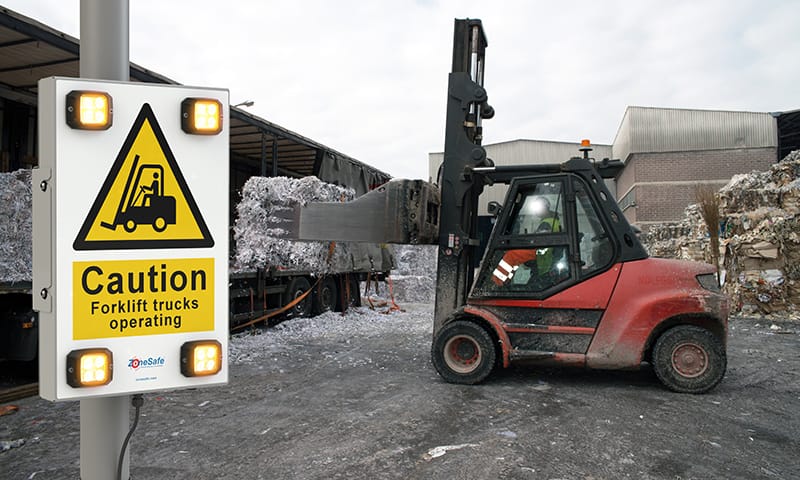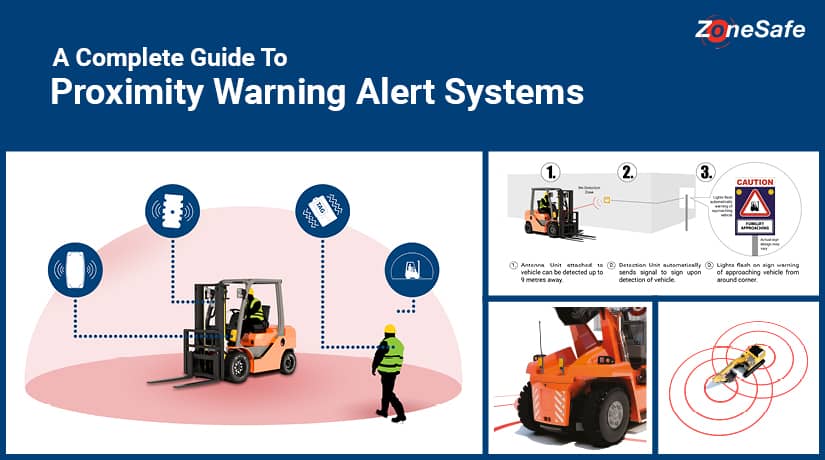Workplace transport accidents are one of the most common causes of serious injuries and fatalities in the waste management industry, and being struck by a moving vehicle accounts for around 140 reportable accidents to the Health and Safety Executive (HSE) within the sector every year[1].
The consequences of these types of events are often severe, resulting in serious injuries, fatalities, reputational and equipment damage, and high costs. The HSE provides guidance specific to vehicle safety and waste centres in the guide: Safe transport in waste management and recycling facilities,
Despite increased awareness and improvements in safe working practices, sadly, there have been a number of high profile tragic accidents reported at UK waste centres in recent years:
In January of this year, a recycling company was fined more than £2 million following the death of an agency worker after a loading shovel struck him. The man had needed to cross an area on foot where loading shovels were in operation and was struck and run over. The HSE investigation found that the company ‘failed to protect pedestrians from the mobile plant operations it was carrying out at the site. There were no suitable traffic management arrangements in place.’
In 2020, a member of the public was struck and killed at a waste centre – the woman had managed to gain access to the site as there were no restrictions in place. The company was fined £250,000. The investigation found insufficient measures to control access to the yard.
In 2019, a worker suffered multiple injuries at a waste management and skip hire company when he was struck by a reversing loading shovel. The HSE investigation found that control of workplace transport at the site was inadequate.
All of these and many more terrible accidents have a common theme – they all involve serious accidents between pedestrians and workplace vehicles, and the investigations found all had inadequate controls around movement of vehicles around pedestrians. Although thankfully rare,
it is clear from such events that there is a continuing and serious risk at waste centres in areas where people and vehicles work in close proximity – it is, therefore, crucial that employers take real action to address this.

How does ZoneSafe help vehicle safety?
Quite simply, ZoneSafe makes waste centres safer. The system works by alerting drivers and pedestrians to the presence of risk so that action can be taken before an accident occurs.
Glass recycling company Recresco employed ZoneSafe’s proximity warning solution at both Ellesmere Port and Cwmbran, South Wales sites. Following the implementation of ZoneSafe, the company saw a dramatic improvement in overall site safety and a reduction in the number of breaches - Read the case study
ZoneSafe proximity warning vehicle safety solution
ZoneSafe’s proximity warning system uses RFID technology to create a line of communication between vehicles and pedestrians. Pedestrian workers are issued lightweight tags worn on their person, while vehicles are fitted with a proximity sensor and an in-cab control unit.
The system creates an invisible 360-degree adjustable detection zone around the vehicle that, when breached, raises an audible/visual alarm to the driver. The pedestrian wearing the tag receives an audible vibration alert to raise their awareness of the vehicle’s presence nearby.
Whilst in operation, ZoneSafe collects and collates real-time data that records every breach and near miss, offering crucial insight into safety risks on site that can later be used to provide targeted safety training and raise overall awareness of hazards.
ZoneSafe can be applied as a stand-alone proximity warning system to address specific safety concerns or alongside other complimentary products within the ZoneSafe range, such as sensor-activated warning signs.

ZoneSafe sensor-activated signage for vehicle safety
ZoneSafe’s sensor-activated signage provides an effective and flexible solution to traffic management on sites of all sizes and in areas where pedestrian access is unrestricted and tagging personnel may be unsuitable.
Vehicles are fitted with a sensor and signs are placed in high-risk locations – the signs automatically activate as the vehicle approaches within a defined detection distance. The flashing illumination of the sign immediately draws the eye, alerting pedestrians and drivers to risk. By raising awareness at this crucial moment, serious accidents are avoided. Once the danger is gone, the sign automatically deactivates.
Improve vehicle safety at your waste centre.
Investigations following serious accidents almost always reveal that the incident could have been avoided had effective vehicle safety measures been in place. Don’t wait until it’s too late – get in touch to discuss your vehicle safety concerns and learn how ZoneSafe can be applied.
[1] http://www.organics-recycling.org.uk/dmdocuments/HSE_Traffic_management_on_waste_sites_guidance.pdf



